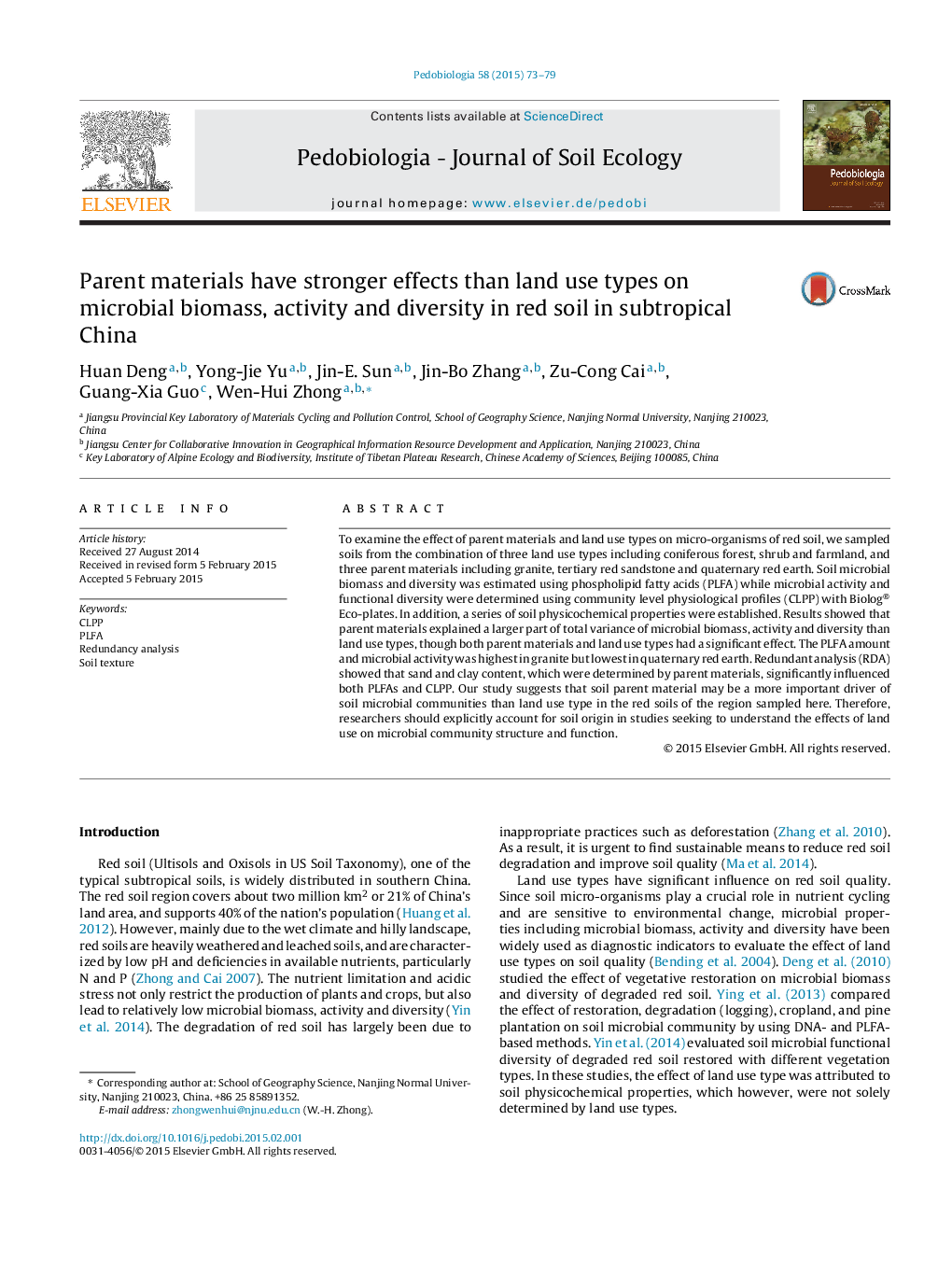| Article ID | Journal | Published Year | Pages | File Type |
|---|---|---|---|---|
| 2061008 | Pedobiologia | 2015 | 7 Pages |
•Parent material had a stronger effect than land use type on microbial communities in red soil.•Soil microbial biomass and activity were highest in soils derived from granite.•Soil microbial biomass, activity, and diversity were higher under shrub land than farmland.
To examine the effect of parent materials and land use types on micro-organisms of red soil, we sampled soils from the combination of three land use types including coniferous forest, shrub and farmland, and three parent materials including granite, tertiary red sandstone and quaternary red earth. Soil microbial biomass and diversity was estimated using phospholipid fatty acids (PLFA) while microbial activity and functional diversity were determined using community level physiological profiles (CLPP) with Biolog® Eco-plates. In addition, a series of soil physicochemical properties were established. Results showed that parent materials explained a larger part of total variance of microbial biomass, activity and diversity than land use types, though both parent materials and land use types had a significant effect. The PLFA amount and microbial activity was highest in granite but lowest in quaternary red earth. Redundant analysis (RDA) showed that sand and clay content, which were determined by parent materials, significantly influenced both PLFAs and CLPP. Our study suggests that soil parent material may be a more important driver of soil microbial communities than land use type in the red soils of the region sampled here. Therefore, researchers should explicitly account for soil origin in studies seeking to understand the effects of land use on microbial community structure and function.
